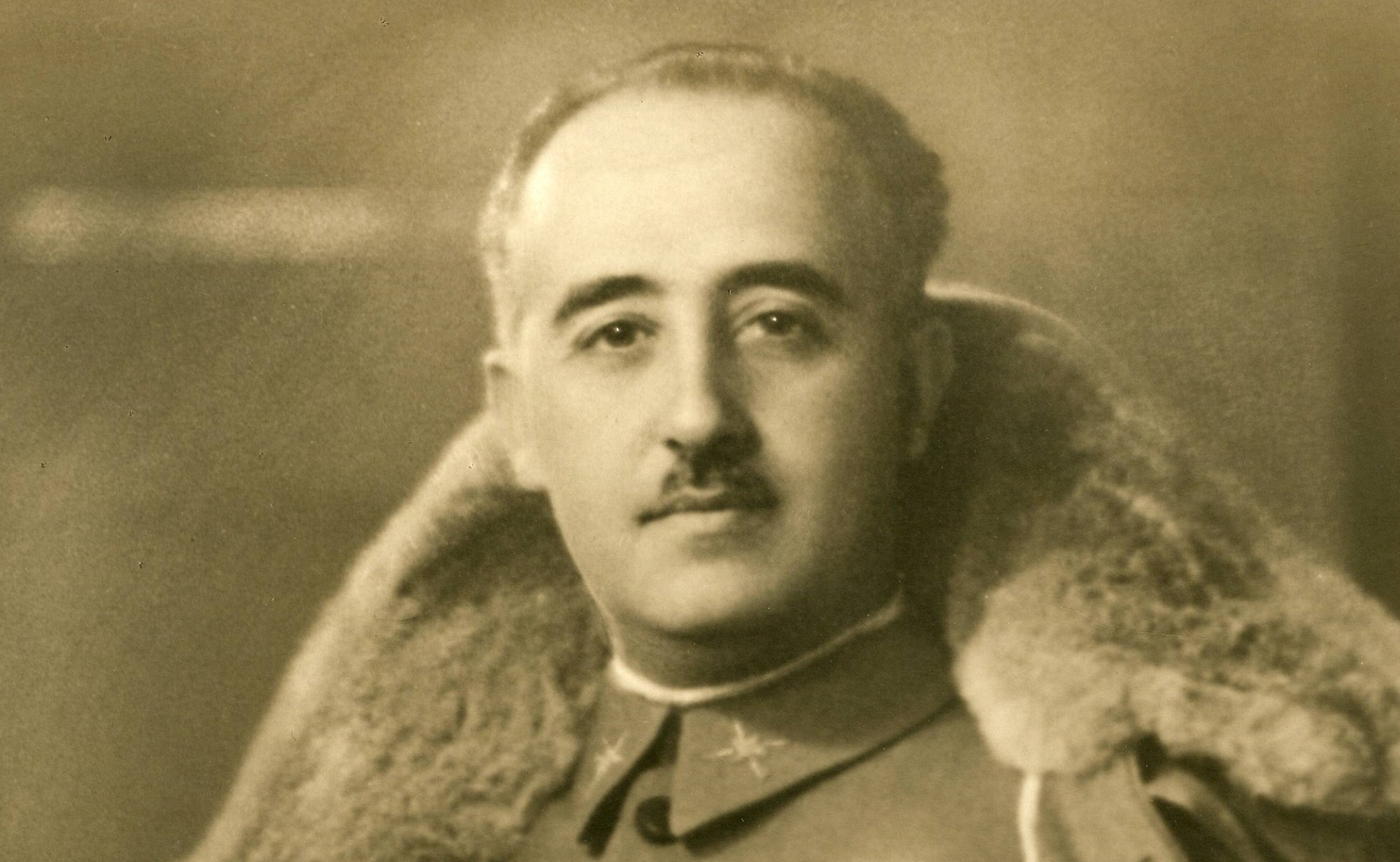05 July 2018
Franco’s Ghost
Amnesia isn’t easy.
By Neil Tidmarsh
 The Valley of the Fallen lies in the barren Guadarrama mountains thirty miles north west of Madrid. At its heart is a massive Roman Catholic basilica – an underground crypt quarried out of the side of a mountain – which holds the remains of more than 30,000 dead from the Spanish Civil War of 1936-39. A huge stone cross, 500 feet tall, crowns a rocky outcrop rising 500 feet above the basilica, and can be seen from over 20 miles away. The basilica itself is one of the biggest in the world – a large part of the entrance area was deliberately left unconsecrated so the building couldn’t outsize Saint Peter’s in the Vatican.
The Valley of the Fallen lies in the barren Guadarrama mountains thirty miles north west of Madrid. At its heart is a massive Roman Catholic basilica – an underground crypt quarried out of the side of a mountain – which holds the remains of more than 30,000 dead from the Spanish Civil War of 1936-39. A huge stone cross, 500 feet tall, crowns a rocky outcrop rising 500 feet above the basilica, and can be seen from over 20 miles away. The basilica itself is one of the biggest in the world – a large part of the entrance area was deliberately left unconsecrated so the building couldn’t outsize Saint Peter’s in the Vatican.
This 3360 acre complex was built by General Franco’s fascist regime in the 1940’s and 1950’s. Like all examples of fascist gigantism, it’s both ridiculously kitsch and frightening at the same time. The regime claimed it was a memorial to commemorate the dead on both sides of the conflict, an attempt at reconciliation following an extraordinarily bitter and brutal civil war. But few were fooled. It’s always been generally understood that this mausoleum was built to celebrate the victory of Franco’s far-right Catholic Nationalists in the war, and the defeat of the democratically elected left-wing, secular, anti-clerical government of the Republic which he overthrew. The grave of José Antonio Primo de Rivera – the founder of the far-right Falangist party – was the only marked grave and was given pride of place near the altar. Many thousands of political prisoners and Republican prisoners of war were set to work building the monument as more or less forced labour.
General Franco himself was buried there in 1975. Since then it’s been regarded as an overt symbol of his dictatorship, abhorred by much of the country but a place of pilgrimage for fascist sympathisers and other members of the far-right.
Two years ago, Spain’s Socialist party proposed the removal of Franco’s remains from the Valley of the Fallen, so the site really could become a place of reconciliation rather than a triumphalist and intimidating shrine glorifying tyranny. Their motion was passed in the parliament by MPs as a non-binding vote; but now that the Socialists are in government, their leader – prime minister Pedro Sánchez – is planning to have Franco’s corpse exhumed and removed from its tomb forthwith. It’s a sensible proposal, particularly as Franco’s family has always insisted that he shouldn’t have been buried there in the first place, and as Spain has been an exemplary democracy for forty years now (imagine modern Germany tolerating a shrine to Adolph Hitler). But it hasn’t been unanimously supported in Spain. Far-right opposition is predictable; but members of Rajoy’s conservative Popular Party oppose it, too, claiming that it will simply reopen and perpetuate divisions rather than heal them. Some liberals agree, saying that they’d prefer to see the whole place moulder away until it’s forgotten.
The problem is that it’s not easy to forget atrocities and grievances, particularly where the Spanish Civil War and Franco’s dictatorship are concerned. Atrocities and grievances were buried, sometimes literally, for forty years following the conflict and up to Franco’s death; many would claim that they haven’t been fully addressed in the forty years since then, that they can’t be forgotten until they have been fully addressed, that too much has been swept under the carpet.
Two cases have emerged in recent weeks to remind us that this isn’t ancient history. As far as Spain is concerned, this is still practically current affairs.
A court in Argentina has brought 13 charges of torture – beatings, electric shocks, waterboarding, death threats, bastinado (foot-whipping) – against a retired Spanish police officer, living in Madrid, who is accused of having been an interrogator in the Information Brigade, a Franco-era intelligence outfit tasked with rooting out the left-wing underground and destroying political opposition. He can’t be charged in Spain because an amnesty law was passed in 1977, two years after Franco’s death; the officer, Antonio González Pacheco, appeared in a Madrid court in 2014, but the case was thrown out because the 1977 law prevents retrospective prosecutions. Particularly galling to his accusers is the fact that the 72 year old officer was awarded four police medals before he retired in 1982, which increased his pension by 50%. The new Socialist government has opened an investigation into his case.
Thousands of Spanish babies and children of unmarried mothers or left wing dissidents were taken from their parents and sold by doctors, nuns and priests to childless but ideologically sound couples during General Franco’s dictatorship. Birth documents were apparently forged or falsified, and mothers were allegedly forced to give up their children or told that they had died. Most of the children grew up unaware that their parents weren’t their natural parents; many are learning the truth only now. There are claims that the practice continued after Franco’s death; an estimated 30,000 babies were taken from their parents for four decades right up until an adoption law was passed in 1987. Last month an 85 year old retired doctor, Eduardo Vela, appeared in a Madrid court, accused of arranging such abductions (which of course were illegal, but allegedly sanctioned unofficially by the authorities) 50 years ago. He denies the charges.
We’re reminded in Imperium – the RSC’s two-part adaptation of Robert Harris’s trilogy of historical novels about Cicero (currently playing at the Gielgud Theatre in Shaftesbury Avenue) – that the word “amnesty” comes from the Greek word meaning to forget. But amnesia isn’t easy where atrocities are concerned. Two years ago, President Juan Manuel Santos of Colombia bravely and admirably negotiated a peace deal with the Marxist rebel guerrilla group FARC, thus bringing over fifty years of violent conflict to an end. But Ivan Duque’s victory in last month’s presidential elections was due in no small part to his insistence that the armistices given to FARC as part of the peace deal were too lenient after fifty-two years of armed conflict which killed almost a quarter of a million people and displaced over five million others; it appears that much of the electorate agreed with him. And a letter to The Daily Telegraph from a retired colonel last week protested about the anomaly of former soldiers being prosecuted for events which took place during the Troubles in Northern Ireland while the Good Friday Agreement allows immunity and amnesty for hundreds of convicted terrorists.
Wherever they lie, Franco’s bones hardly deserve to rest in peace until the victims of his torturers and child-abductors have had justice. Perhaps then Spain can start to forget him.


